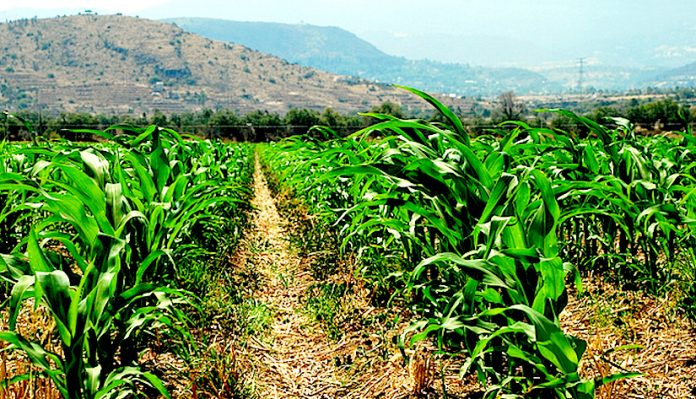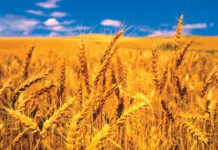Farai Mabeza
CONSERVATION agriculture is built on three principles – minimum soil disturbance, permanent soil cover and crop rotation – that are known to reduce erosion, improve soil quality, conserve water, reduce fuel costs and, more importantly, improve yields.
According to the United Nations’ Food and Agriculture Organisation (FAO) when conservation agriculture was introduced to Zimbabwe, rural areas became dotted with what observers called “NGO (non-governmental organisations) plots” – parcels of land where farmers practiced the approach.
This approach resulted in the limited use of the practice.
The small plots, where conservation agriculture was practiced, were surrounded by other fields where farmers continued their conventional methods. Initially, FAO and other development groups supplied farmers with enough seed and fertilizer to plant half a hectare under conservation agriculture – enough to get them started.
However, the fact that they did not expand these plots made it obvious that, while farmers welcomed the inputs, they were not convinced enough to convert all of their land. There were reasons for this scepticism.
Minimum soil disturbance means farmers do not plough but, instead, hand dig individual holes to plant their thousands of seeds. This is labour intensive and so is weeding and maintaining a permanent soil cover.
Crop rotation calls for farmers to alternate legumes with their maize crops in order to improve soil fertility, but they are often averse to giving up field space where they normally grow their major crops.
FAO also identified, tested and introduced new mechanized technologies that reduce the amount of labour involved in conservation agriculture without compromising its principles. lice ivermectin It provided extension officers, agriculture colleges and NGO groups with sample devices so they could demonstrate them to the farmers and students.
These tools have however not been able to reach a majority of the farmers.
Zimbabwe can learn from how one of its closest allies, China, has achieved a higher success rate in implementing conservation agriculture practices and dealing with some of these challenges.
In the book The Governance of China, President Xi Jinping, urged the adoption of crop rotation.
“This will be beneficial to land restoration, sustainable agricultural development, balancing grain supply and demand, stabilising rural income and reducing rural pressure,” President Xi said.
FAO says that China started no-tillage studies in the 1950s, and no-tillage seeding experiments with two crops a year (wheat during winter /maize during summer) in a region of Northern China throughout the 1980s.
In 1992, China began the systematic study on conservation agriculture technology, with emphasis on the development of no-tillage seeders. These studies generated convincing evidences that conservation agriculture can benefit the dryland wheat and maize production ecologically and economically.
A series of conservation agriculture equipment was developed based on local agricultural conditions.
After years of systematic research and demonstration, the conservation agriculture farming system has been widely recognized as a sustainable way to cope with soil degradation, water shortage, as well as the changing climate in China.
Zimbabwe is faced with the same issues. how does ivermectin work on head lice
“It is through land use that ecological progress can be advanced. Maintaining a balance between population, resources and the environment, and promoting economic, social and ecological efficiency, we will determine an overall plan for developing our land, and allot space to production, to daily life, and to ecological development as appropriate, in order to leave more space for nature’s self-restoration,” President Xi said.
China’s agronomic and economic achievements since 1980s have a strong environmental footprint. While even the bigger challenges to sustaining food and nutritional security lie ahead, soil and environmental degradation remain serious threats to China’s sustainable development.
In Zimbabwe another concern is that emphasis on conservation agriculture has been on food security crops, particularly maize with little promotion of commercial crops although cash crops and rotations are encouraged.
Conservation agriculture has also faced the problem of stigmatisation with a dominant perception that it is a technology for the poor despite the fact that it has been widely practiced by commercial farmers.
Advocates contend that conservation agriculture is not considered enough as part of farming as a business and there is need to focus on high value crops and value addition.
There is need for more research centres and think tanks focusing on conservation agriculture in order to expand its reach to allow it to encompass different sectors of agriculture. para que serve ivermectina em gatos
Higher education institutions such as the University of Zimbabwe and Chinhoyi University of Technology are already involved in conservation agriculture research. These need to help ensure the sustainability of conservation agriculture even after donors stop supporting farmers.
In 1999 China set up the Conservation Tillage Research Centre at the China Agricultural University by Chinese Ministry of Agriculture specifically for conservation agriculture. Conservation agriculture studies were extended to the maize-wheat annual double cropping region, the Northeast ridge tillage region, the farming-pastoral region and the rice-wheat annual double cropping region.
Zimbabwe can leverage on these advancements made by China, a country with which it shares a long historical bond going back to the war of liberation. Both countries have a pressing need to conserve land and the environment.













